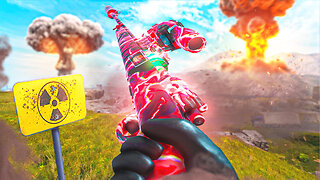Premium Only Content

Mike "Messages his Son About P**n" Johnon Says 🍊🤡 is a Hero FBI Imformant...You Buying It?
If ANYONE ever questions YOU about why YOU don't trust the United States government...please, show them THIS video! And politely ask them, "Where are OUR leaders? Where are YOUR leaders? The nation might as well be fire."
I asked Google A.I. just to make sure....
Q.) hey google, along with the Maui Fire, The Ohio Train Derailment, what other awful circumstances have the American people suffered recently?
A.) In addition to the Maui fires and the Ohio train derailment, the American people have recently suffered through mass shootings, deadly heat waves, a continuing opioid crisis, severe tornado outbreaks, and the lasting social and economic effects of the COVID-19 pandemic.
Mass shootings
The United States has seen a consistent and alarming rise in mass shootings in recent years.
The deadliest incidents In recent years, some of the deadliest mass shootings have included:
2023 Lewiston shootings: A gunman killed 18 people and injured 13 others in Lewiston, Maine.
2022 Uvalde school shooting: A shooter killed 19 children and 2 teachers at an elementary school in Uvalde, Texas.
2022 Buffalo supermarket shooting: Motivated by white supremacist ideology, a gunman killed 10 people at a supermarket in Buffalo, New York.
Widespread impact: The emotional and social toll of these events extends far beyond those killed and injured, impacting survivors, families, and entire communities.
Extreme heat
Record-breaking temperatures have made extreme heat the deadliest weather-related hazard in the U.S. in recent years.
Record heat waves: In the summer of 2024, an analysis by Climate Central found that the average person experienced an extra 17 days of "risky heat". Cities in the Southeast and Northeast experienced dangerous conditions, leading to heat emergency declarations.
Rising deaths: According to a study published in JAMA, heat-related deaths across the country are on the rise, with more than 21,518 people dying from heat between 1999 and 2023.
Drug overdose crisis
The opioid epidemic, primarily driven by synthetic opioids like illicit fentanyl, continues to have a devastating impact across the nation.
Continuing fatalities: In 2023, approximately 105,000 people died from drug overdoses in the U.S. While this was a slight decrease from the prior year, the rates for some demographics, such as non-Hispanic Black people, continued to rise.
Fentanyl's role: Illegally made fentanyl and its analogs were involved in nearly 70% of all overdose deaths in 2023.
Severe tornadoes
The U.S. has experienced significant and deadly tornado outbreaks, including some of the largest in recent history.
2024 outbreak in Kentucky: In May 2024, a powerful EF4 tornado killed 19 people in Kentucky.
2021 outbreak in Kentucky: In December 2021, a violent tornado outbreak spawned a single storm that tracked over 165 miles, killing 57 people in Kentucky.
2021 Super Outbreak: This outbreak produced 367 tornadoes over several days, resulting in 324 deaths.
COVID-19 pandemic effects
The COVID-19 pandemic, though its public health emergency declaration has ended, continues to have profound long-term impacts.
Long-term population changes: Increased mortality and a drop in immigration contributed to an estimated 0.5% long-term reduction in the U.S. population.
Economic disruption: The pandemic is estimated to have resulted in $14 trillion in economic losses to the U.S. economy by the end of 2023. While the labor market has recovered, labor force participation has not yet reached pre-pandemic levels.
Mental and social health: The pandemic had significant effects on the mental health of many Americans, and exposed societal inequities in health, income, and access to technology.
AND then I asked Google A.I. again...
Q.) hey google, can you please describe to me the living and working conditions of the bottom economic 50% of America?
A.) For the bottom 50% of American households, living and working conditions are marked by low wages, job insecurity, and extreme financial precarity, which create significant challenges in affording necessities like housing and healthcare.
Working conditions
Low wages and job insecurity: Many workers in this economic group are employed in low-wage positions, often in service sectors. Despite working long hours, sometimes at multiple part-time jobs, their earnings are often insufficient to cover basic expenses. In 2022, 68% of the working poor experienced low earnings.
Minimal benefits: To avoid paying for health insurance, paid leave, and other benefits, many companies employ more part-time workers.
Lack of bargaining power: The decline of labor unions in recent decades has weakened the bargaining power of workers without college degrees, making it more difficult to secure higher wages and better working conditions.
Unequal job opportunities: Workers in high-earning occupations that require higher education are the least likely to be classified as "working poor".
Gender and race disparities: Women, particularly women of color, have higher rates of being classified as working poor in many occupational groups. Women in male-dominated, working-class roles may also face harassment.
Living conditions
Stagnant wages: While the cost of living has steadily increased, wages for the bottom 50% of earners have not kept pace with economic growth. In 2018, the median male worker needed 53 weeks of income to cover the cost of thriving for his family, up from 30 weeks in 1985.
Overwhelming debt: The bottom 50% of Americans have minimal savings and own very little stock, so they often rely on debt to cover expenses. A 2019 Pew Research study found that lower-income Americans are more likely to carry medical debt than middle- or upper-income individuals.
Severe housing crisis: A severe housing shortage and lack of affordable units have led to a crisis in housing affordability.
Many Americans cannot afford a home: As of May 2024, nearly half of U.S. households could not afford a $250,000 home. In 2025, one analysis found that 7 out of 10 homebuyers were priced out of the market. Many low-income renters are also severely burdened by costs, with 70% of extremely low-income families paying more than half their income on rent.
For those unable to afford rent, homelessness is a growing reality.
Limited access to healthcare: Cost is a significant barrier to healthcare, even for those with insurance. In 2023, more than half of working-age Americans struggled to afford their medical costs. As a result, many people in this economic group skip or postpone necessary care, which can worsen health problems.
Educational disparities: Low-income adults are disproportionately less likely to have a college degree and more likely to have not graduated high school. This can create a cycle of poverty, as lower levels of education often lead to lower-paying jobs.
Shorter life expectancy: Americans living in lower-income counties have a shorter life expectancy than those in wealthier counties. In some cases, the gap is as large as 15 years. Research links poverty to increased risks of chronic disease, mental illness, and higher mortality rates.
A.) The "meaning crisis" and the broader mental and emotional crisis in America are defined by rising rates of anxiety, depression, substance abuse, and suicide, along with a widespread feeling of social disconnection and a loss of collective purpose.
This multifaceted crisis is a result of systemic, social, economic, and technological factors that have eroded traditional sources of identity and meaning.
Indicators of the mental and emotional crisis
High and rising mental illness rates: In 2022, nearly 60 million American adults experienced a mental illness, and over half of those with a mental illness did not receive treatment. The rate of mental illness has been steadily rising for years and was accelerated by the pandemic.
A youth mental health emergency: Children and adolescents are experiencing alarming rates of mental health issues. Suicide is the second-leading cause of death for those aged 10 to 14, and in 2022, young adults had the highest prevalence of mental illness among all age groups.
Increased suicide and substance abuse: The U.S. recorded its highest-ever number of suicide deaths in 2022. Rates of substance use disorders are also high, with the vast majority of those with a disorder not receiving treatment.
Increased isolation: Loneliness and social isolation, exacerbated by the COVID-19 pandemic, were already reaching epidemic levels. Studies also indicate a decline in community involvement, which contributes to increased isolation.
The meaning crisis: An underlying factor
The mental and emotional distress in America is intertwined with a pervasive "meaning crisis," described as a lack of purpose, identity, and shared values.
Signs of the meaning crisis:
Feelings of hopelessness: A sense that there is no reason to live or that life is without meaning.
Catastrophizing: A constant focus on negative outcomes, often accompanied by withdrawal from social interactions.
Difficulty with daily tasks: A loss of psychological equilibrium can lead to an inability to carry out daily responsibilities.
Key causes and contributing factors
1. Technology and social media
Social media is a double-edged sword, offering connection while often harming mental health.
Negative comparison: Curated online "highlight reels" can fuel dissatisfaction, low self-esteem, and fear of missing out (FOMO).
Increased anxiety and depression: Excessive social media use is strongly linked to higher rates of anxiety, depression, and loneliness, particularly among young people.
Political echo chambers: Algorithms can reinforce existing beliefs and create filter bubbles that promote extreme viewpoints and deepen social divides.
2. Political polarization
Heightened partisan animosity is a significant source of chronic stress and anxiety.
Toxic discourse:
RAN OUT OF SPACE HERE! HAD TO STOP!
-
 14:22
14:22
Robbi On The Record
2 days ago $0.64 earnedGen Z’s Narcissism Obsession: Why Everyone’s a “Psychologist”
19K9 -
 LIVE
LIVE
GritsGG
6 hours agoQuad Win Streaks!🫡 Most Wins in WORLD! 3600+
298 watching -
 1:09:28
1:09:28
Sarah Westall
3 hours agoCan the World Be This Strange? The Nature of Our Reality w/ Darius J Wright
20.7K1 -
 1:58:20
1:58:20
megimu32
4 hours agoOn The Subject: Friends | 31 Years of the Sitcom That Defined a Generation
27.1K4 -
 30:00
30:00
BEK TV
1 day agoCounter Culture Mom
5.04K -
 1:24:54
1:24:54
Kim Iversen
7 hours agoTylenol vs Vaccines: Which One Is The REAL Cause Of Autism? The Truth Will Upset You
58.4K67 -
 LIVE
LIVE
GloryJean
4 hours ago2v2 Tuesday 🔥 Night Games w/ The Boys 🖱️ 6.7 K/D
11 watching -
 6:14:12
6:14:12
XxXAztecwarrior
7 hours agoNew Season/ War Ablaze
1.79K -
 DVR
DVR
Armadillofather
4 hours agoTime for some Borderlands Chaos! | Thank you for being here!
1.31K -
 1:03:39
1:03:39
TheCrucible
7 hours agoThe Extravaganza! EP: 41 (9/23/25)
282K20